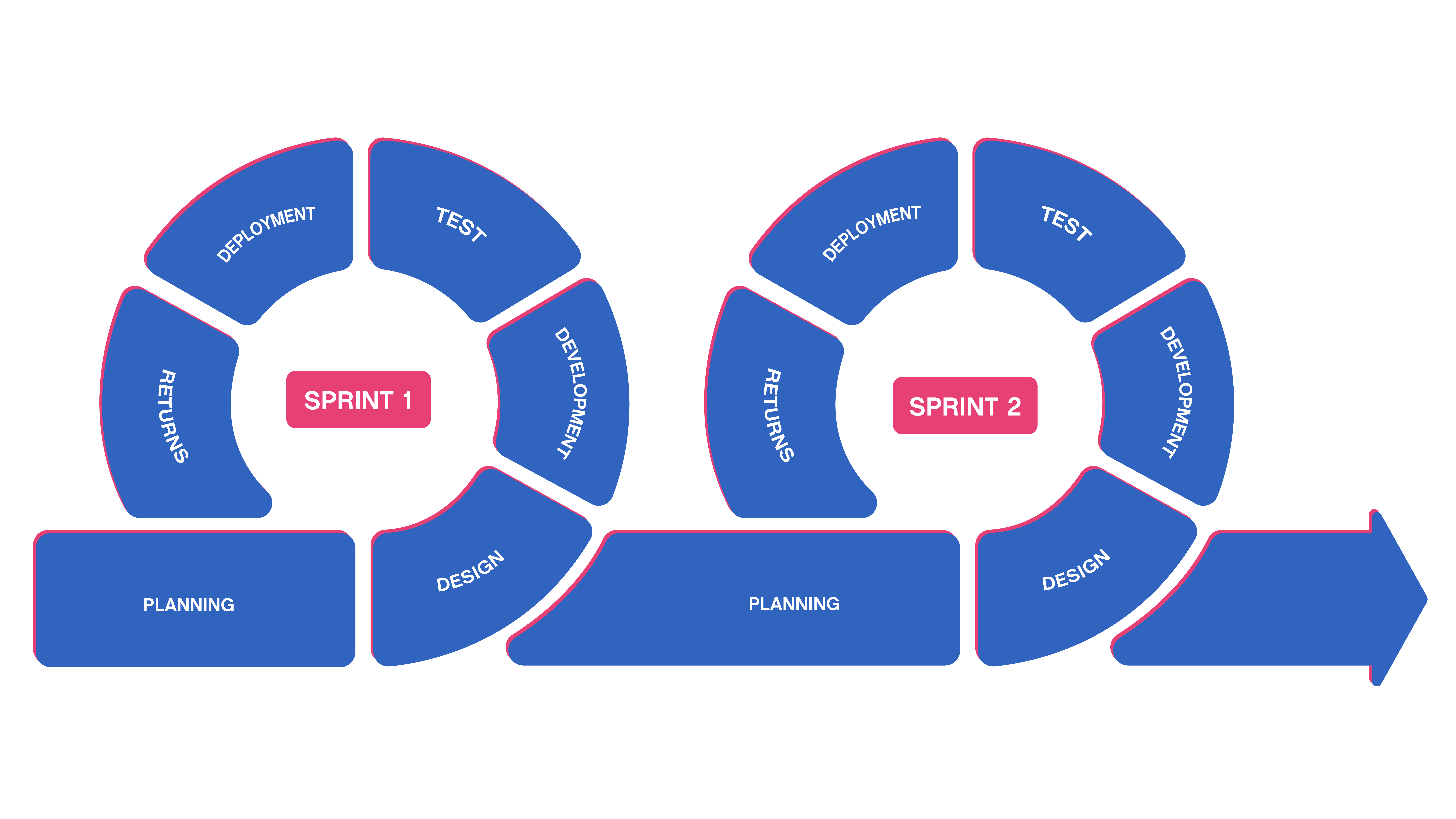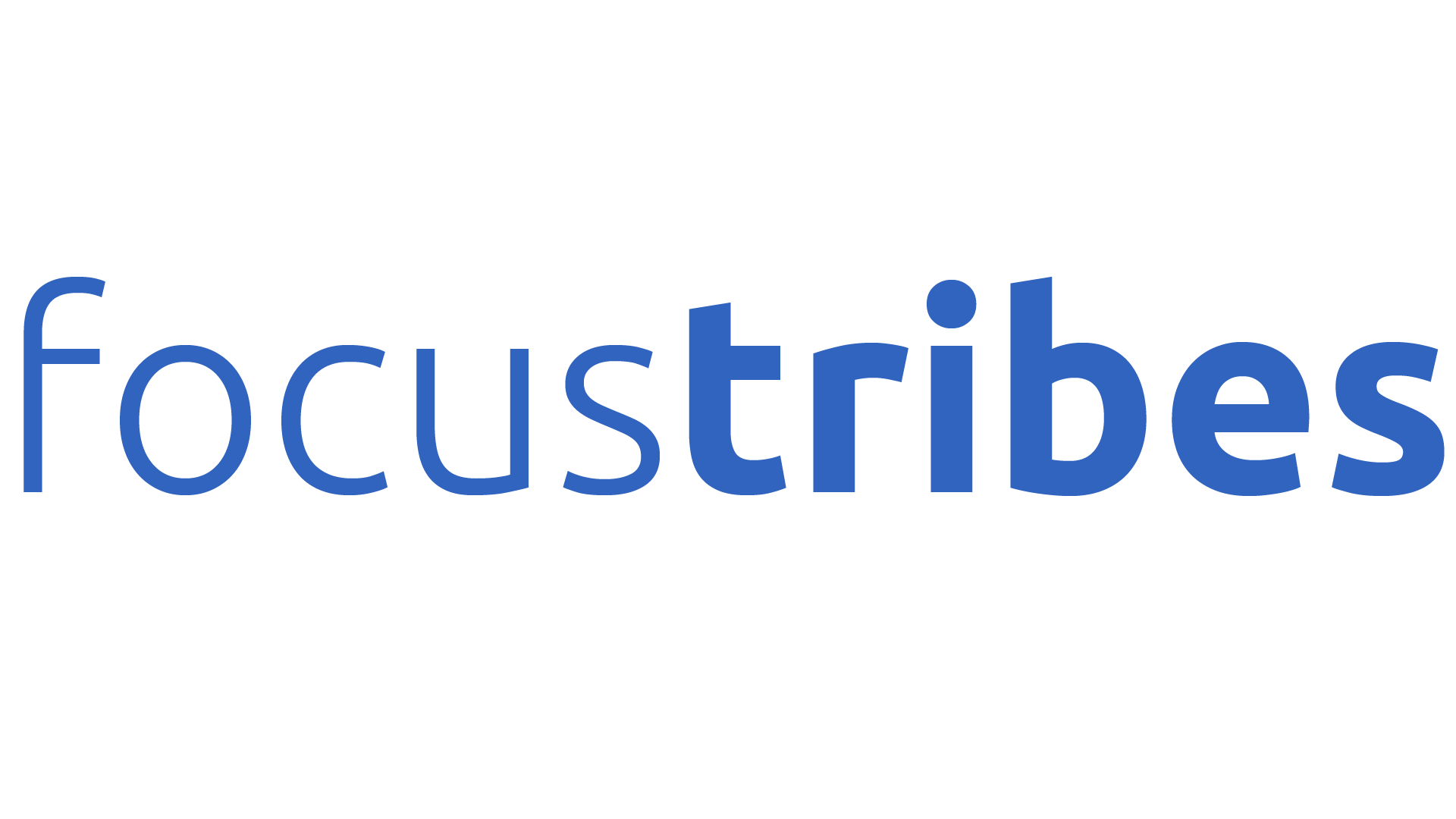In an ever-changing business landscape, where flexibility and adaptability are key assets, the project management methodology is emerging as an essential pillar for companies seeking to optimize their operational efficiency. In this article, we will explore in detail the agile method, its fundamental principles, its usefulness and benefits, as well as best practices for its successful application within companies.
What is the Agile methodology ?
Before going any further, it's crucial to understand what exactly the agile methodology is.
Origins of the agile methodology
The agile methodology is an approach to project management that emphasizes flexibility, collaboration and continuous improvement. It has its roots in software development, where it was formalized in the early 2000s with the publication of the Agile Manifesto. This manifesto, written by a group of developers, advocated values and principles aimed at improving the responsiveness and efficiency of development teams. Agility drew inspiration from earlier methods such as iterative development and lean manufacturing, seeking to shorten development cycles and better respond to changing customer needs.
Why choose agile for enterprise project management?
More and more companies are adopting agile project management methods because of their ability to adapt quickly to change. Agility enables better communication between teams and stakeholders, promoting a shared understanding of objectives and priorities. It also encourages the continuous delivery of value, enabling companies to react swiftly to customer feedback and market developments. In addition, the agile approach fosters innovation and creativity, enabling teams to test new ideas and adapt according to the results obtained.
Key differences between Traditional Project Management and Agile Methodology
Traditional project management, often represented by the waterfall model, follows a linear, sequential approach. Each project phase must be completed before moving on to the next, which can make it difficult to integrate changes along the way. In contrast, agile methodology is iterative and incremental, enabling constant adjustments throughout the project lifecycle. What sets agility apart is its ability to adapt quickly to unforeseen circumstances and integrate feedback in real time, which is often impossible with a traditional approach. This flexibility is particularly valuable in a constantly changing business environment, where the ability to pivot quickly can be a decisive competitive advantage.
.png?width=551&height=310&name=Design%20sans%20titre%20(14).png)
Fundamental Principles and Values of the Agile Method
The fundamental principles of the agile methodology are set out in the Agile Manifesto. This founding document dates back to 2001 and is the result of the work of 17 software development experts who had observed a high failure rate in projects in the 1990s. The agile methodology is opposed to the "waterfall" or V-cycle development cycle methodology, which no longer met companies' need for speed. This methodology focuses on 4 values and 12 key principles :
The 4 key values
People and interactions more than processes and tools
Direct and frequent exchanges between team members promote better understanding and rapid problem solving.
Operational software more than exhaustive documentation
Priority is given to functional products. Rather than focusing on exhaustive documentation, the emphasis is on delivering products that meet users' needs.
Collaboration with customers more than contractual negotiation
Working closely with customers and stakeholders ensures that expectations are aligned and adjustments can be made in real time.
Adapting to change more than following a plan
Adaptability is a crucial value, enabling teams to adjust quickly to change and remain competitive.
The 12 principles
1- Offer concrete value to the customer
2- Consider requests for change
3- Regularly update functional versions
4- Encourage collaboration between customer and team
5- Work on projects with motivated people
6- Encourage face-to-face discussions
7- Evaluate progress against operational deliverables
8- Keep project moving forward at a manageable and constant pace
9- Strive for excellence
10- Minimize unnecessary work
11- Form project with autonomous teams
12- Improve team efficiency
In summary, the principle of the agile methodology is to eliminate everything that is superfluous in order to quickly deliver a working version to the customer. This then allows us to discuss with them whether they are satisfied with the product and to take their feedback into account.
What are the advantages and benefits of the Agile approach?
The agile approach offers many advantages to companies that adopt it. By promoting close collaboration between team members and encouraging transparent communication, it enables problems to be identified and resolved quickly.
Better project control
In an agile methodology, the project is broken down into iterations called "sprints". At the end of each sprint, a product demonstration is carried out, enabling the project team and stakeholders to see the progress made. This iterative process enables continuous monitoring of the project, with possible adjustments to ensure that the project remains on track.
Improve project vision
The agile approach encourages open and transparent communication between team members and stakeholders. Regular product reviews enable all parties involved to gain a better understanding of the features under development, and to provide valuable feedback. This helps to refine and clarify the project vision as it progresses.
Risk reduction
The agile approach identifies and deals with risks right from the start of the project. By working in short iterations, potential problems are detected earlier, enabling them to be resolved quickly and reducing the impact on the project. In addition, close collaboration between team members and stakeholders enables proactive risk management throughout the development cycle.
Increased flexibility
Agility is at the heart of agile methodology. By adopting iterative and incremental processes, the team is able to adapt quickly to changing priorities, emerging requirements and feedback. This enables the project to remain flexible and respond effectively to changing customer and market needs.
Continuous improvement
One of the fundamental values of the agile approach is its emphasis on continuous improvement. At the end of each iteration, a retrospective is conducted to assess what went well and what can be improved. These lessons learned are then integrated into the next sprints, enabling the project's processes and results to be constantly optimized.
What are the drawbacks and limitations of the Agile approach ?
Of course, the agile approach offers many advantages to companies that adopt it. By promoting close collaboration between team members and encouraging transparent communication, it enables problems to be identified and resolved quickly. But like all methods, it also has its drawbacks and limitations.
Difficulty in managing large teams
Although the Agile approach is ideal for small to medium-sized teams, it can become more complex to manage when the teams are large. Coordination between team members can become difficult, especially if teams are geographically dispersed.
Need for strong stakeholder involvement
The Agile approach requires the continuous and active involvement of stakeholders throughout the development process. If stakeholders are not available or not actively involved, this can lead to delays, which can affect the quality of the final product.
Organisational adaptability
Introducing the Agile approach can require significant changes in organisational culture and in the way projects are managed. Companies with rigid organisational structures or a traditional culture may encounter resistance to change, making the adoption of Agile difficult.
Limited documentation and planning
Although the Agile approach focuses on the continuous development and delivery of functionality, some projects require more rigorous documentation and planning. The absence of detailed documentation can make it difficult to maintain the product over the long term or to comply with strict regulations.
Risk of drift
With the flexibility offered by the Agile approach, there is a risk that the project scope may drift over time. Frequent changes in requirements or priorities can lead to an uncontrolled expansion of the scope, resulting in time and budget overruns.
The need for appropriate expertise and experience
Successfully implementing the Agile approach requires considerable expertise and experience. Teams need to understand the Agile principles and be trained in the different methods and practices, which can be a challenge for some organisations.
Main Agile methodologies and frameworks
Companies have a number of agile methods and frameworks at their disposal, which they can choose according to their specific needs and the nature of their projects. These approaches enable projects to be managed efficiently, while remaining flexible and responsive to change.
The Scrum Method: Roles, Sprints and Retrospectives
Scrum is a popular agile method that focuses on managing projects through sprints or short work cycles. These sprints, generally lasting two to four weeks, enable teams to focus on specific objectives, thus promoting rapid and regular delivery of functionality. A key element of Scrum is the daily "stand-up" meeting, which helps teams synchronize their efforts and quickly resolve obstacles.

Kanban: visualization and efficiency
Kanban is another agile method that focuses on visualizing workflow and limiting work-in-progress to improve efficiency. Using a Kanban board, teams can visually track task progress, identify bottlenecks and adjust priorities in real time. This method is particularly useful for teams who need to manage a constant flow of requests without the constraints of fixed sprints.
Extreme Programming (XP): Quality and Responsiveness
Extreme Programming (XP) is particularly advantageous for software development projects requiring high adaptability and continuous improvement. It is ideal for use where project requirements are likely to change frequently, or where software quality is paramount. XP emphasizes practices such as iterative development, automated testing and pair programming, which reduce errors and improve collaboration between developers. These practices promote greater responsiveness to change and rapid delivery of value, making XP particularly suited to projects where flexibility and quality are essential.
Lean: Maximizing Value
Lean seeks to maximize value by minimizing waste, drawing on the principles of lean manufacturing. This approach encourages teams to eliminate non-value-adding activities, optimize processes and focus on customer satisfaction.
In conclusion, the agile methodology offers companies a flexible and adaptive framework for managing projects effectively and responding to changing market requirements. By adopting an agile approach, companies can improve their operational agility, foster innovation and deliver greater value to their customers.
Tools and best practices for successful Agile project management
Essential Agile Management Tools: Jira, Trello, and Others
The right tools are crucial to successful agile project management, as they form the backbone of team coordination and efficiency. Software such as Jira, Trello, and Asana are widely used to plan, track and manage tasks within agile teams. These platforms offer a host of features that facilitate sprint management, making it possible to define clear objectives and track their achievement over time.
Real-time collaboration tools: Slack and other platforms
Real-time collaboration is essential for agile teams, and tools like Slack play a key role in this. Slack enables fast, fluid communication between team members, reducing response times and promoting faster decision-making. Other platforms, such as Confluence, offer centralized collaborative documentation, ensuring that all stakeholders have access to the latest information.
Agile Training and Team Support
Supporting agile teams involves more than just technological tools. Ongoing training and skills development are essential to strengthen collaboration and innovation. By integrating appropriate training programs, teams can improve their operational efficiency and ensure that all members are aligned with project objectives.
Measure and Optimize Performance with Dashboards and KPIs
Customizable dashboards and key performance indicators (KPIs) are crucial for measuring and optimizing the performance of agile projects. These tools help visualize project progress and quickly identify potential obstacles, facilitating better coordination and increased transparency. By combining these technologies, teams can not only improve their efficiency, but also guarantee the success of agile projects.
Focustribes supports you in your agile projects
Focustribes is THE QUALITY LABEL for freelance consulting.
We all know that a successful project is not just a question of methodology, but also (and above all) a question of people. Our job is toaccredit the best freelanceconsultants, integrate them into our community, and make them available to our customers.

